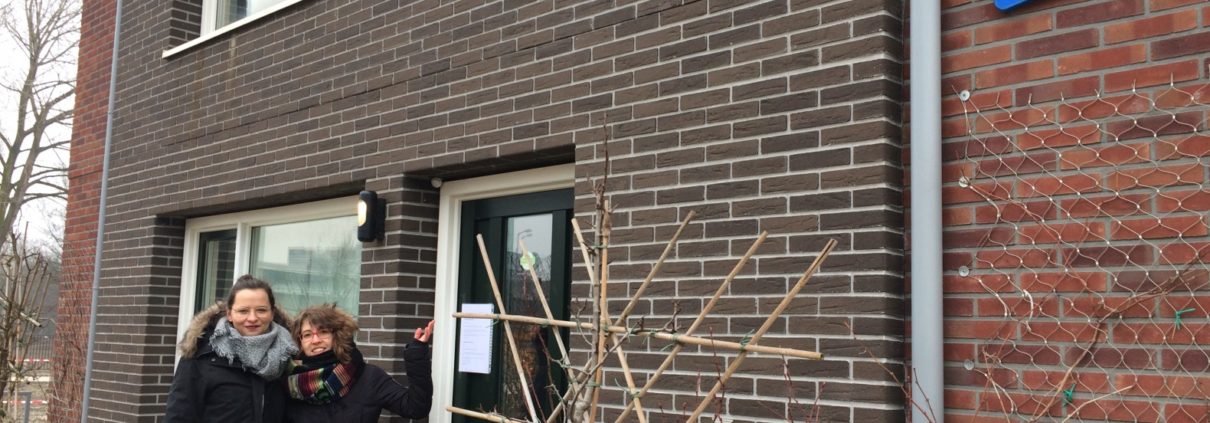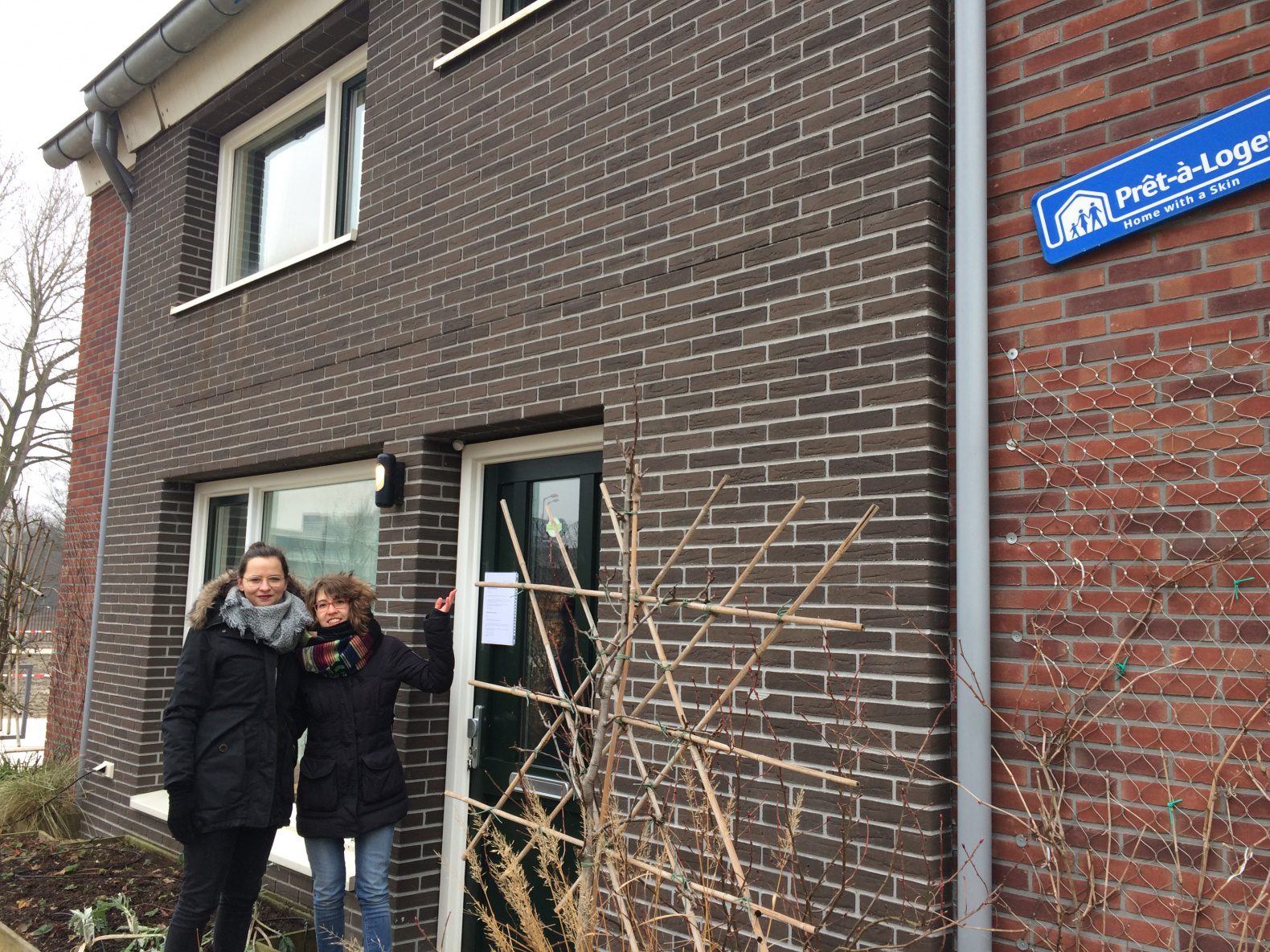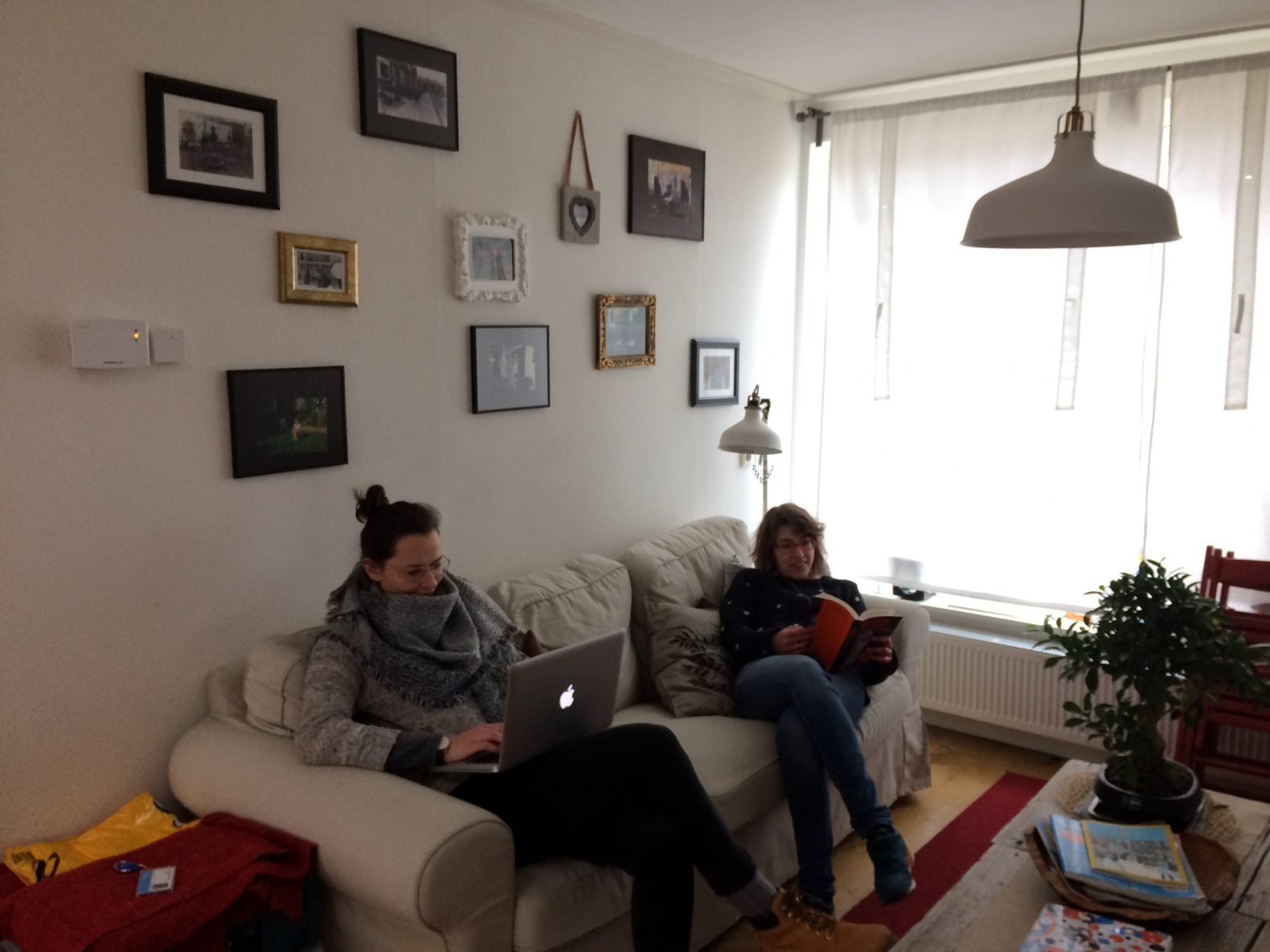Living in my car powered home
For a period of 2 weeks Francesca Abbruzzese and Anna Rojan are living in the Pret-a-Loger (PaL) house at The Green Village (TGV) experimenting with the use of electricity generated by solar panels and a modified hydrogen fuel cell car. The two visiting students, both doing their master thesis’s related to the Car as Power Plant Project, will perform their daily duties as usual and go to work every weekday. The Prêt-à-loger house is an all-electric house equipped with solar panels on the rooftop for power generation and a heat pump for heating and cooling. Together with the house they have at their disposal a modified Hyundai ix35 FCEV for mobility and power generation when the car is parked at TGV. The car is connected in vehicle-to-grid (V2G) mode through a discharge pole and can deliver up to 10 kW power output to the national AC grid. The aim is that the hydrogen fuel cell car can assist the house in becoming a zero-energy building. Francesca tells about their experiment.
From 6-20 February you’re living in the Prêt-à-loger house. In this period temperatures dropped till -4°C How will you cope with these circumstances?
“The whole first two weeks in February sure were a challenging time to live in a sustainable house powered by solar energy and a fuel cell car, even though the connection to the electrical network reassures us from remaining without electricity. The experiment we are running consists in the connection of a FCEV (Fuel Cell Electric Vehicle) to the grid in V2G (Vehicle-to-Grid) mode. The first week the on-board FC (Fuel Cell) system delivered a constant power value of around 3kW for 12 hours to the grid; the second week this output power value will be increased to 10 kW with a consequent reduction of the operating time to 6 hours to reserve enough H2 for the mobility, that remains the car’s primary function. Our living in the PaL house has to ensure the generation of realistic, daily consumption profiles.”
Bad weather is good for our research
“The aim of the experiment is to evaluate the fraction of the load covered respectively by the photovoltaic system installed in the house, by the FCEV when connected in V2G mode and by the electrical network when the two sustainable sources are not available or not sufficient to cover the request. The solar production is very low in these days (lower than 0.5 kW), because of the bad weather, but this is good for our research purposes because it allows us to test the system in adverse conditions.”
Can the FCEV assist the house in becoming a zero-energy building even in bad weather conditions?
“Practically, all the produced energy is sent to the grid and taken from it when required, so we don’t use the electricity produced by the car directly and we never risk to remain without electricity. The objective of this experiment is the assessment, based on real data, of the amount of energy exchanged with the grid. The main research question that we want to answer is “Can the FCEV assist the house in becoming a zero-energy building even in adverse weather conditions?” Thanks to the V2G connection, the amount of energy exported is significantly increased with respect to the only solar production. Also the net amount of energy imported from the grid is reduced.
In the few days we spent in the new house, we have already experienced external temperatures of -4°C, the house heating system helped us to face these cold days, even if blanket and pullover were required to properly deal with it.”








